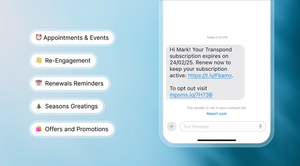B2B products have a specific target audience and require special marketing efforts. The stakes are high, the average product cost can be very high, and many stakeholders are involved in the decision-making process.
This makes B2B digital marketing challenging because investing in the wrong digital marketing strategy can hit your bottom line.
In this blog post,if you’re looking to produce a B2B digital marketing strategy, we’ll provide that.
In this guide you’ll find strategies, examples, tips and tricks, and everything else you wanted to know about creating marketing campaigns for B2B audiences.
What is B2B digital marketing?
B2B digital marketing, also known as business-to-business digital marketing, refers to companies' online marketing strategies and tactics for promoting their offerings to other businesses. The goal of B2B digital marketing is to provide value by building relationships, generating leads, and driving sales by addressing the specific needs of a target audience.
B2B digital marketing benefits
B2B digital marketing offers many advantages beyond traditional methods, helping you target the right audience while maximizing efficiency.
Below are some key benefits that show why a digital-first approach is one of the best digital marketing strategies for any growing business.
- Pinpointed outreach: B2B digital marketing, including search engine marketing and other effective digital marketing channels, lets you reach the right decision-makers precisely, putting your message in front of the people who matter most
- Real-time clarity: Instead of relying on vague results from traditional methods, digital marketing provides real-time data that helps you optimize your digital marketing tactics. You’ll know exactly what’s working and what’s not – no guesswork, just facts.
- Budget with purpose: Why spend on broad campaigns when you can target the leads that move the needle? Digital marketing lets you focus your budget where it counts, eliminating wasted spend.
- Grow at your own pace: Digital marketing doesn’t demand a substantial upfront investment. Start small, test tools, see what works, and scale your efforts as your business grows—without the pressure to go all-in from day one.
- Smart lead nurturing: With marketing automation, you can engage potential clients immediately without constant oversight. It’s like having a digital assistant that knows when to push a lead closer to signing the deal
- Agility in action: Digital marketing allows you to adapt quickly when market trends shift, or campaigns underperform.
After looking at the advantages of B2B digital marketing, you might wonder how it stacks up against B2C. While they may seem alike on the surface, the differences between them are where the real strategy comes into play.
B2B vs B2C marketing
While the basic principles are similar, online marketing for B2B audiences fundamentally differs from that for the B2C crowd. Here are some of the key differentiators.
While the basic marketing principles apply to both B2B and B2C, the approaches differ significantly foraudience, sales cycle, content types, and goals. We’ll cover these differences in detail below to demonstrate how each marketing strategy works best in its context.
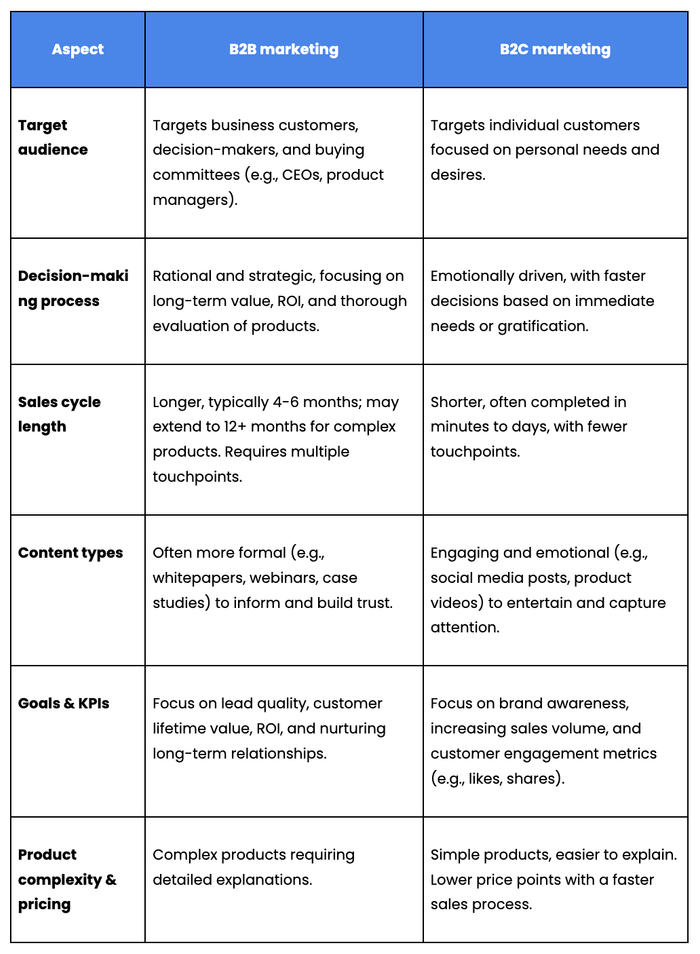
The target audience and the decision-making process
B2B digital marketing targets business customers, decision-makers, and buying committees – product managers, chief executive officers, etc. The buying process is rational, and buyers look for long-term value from products purchased.
It’s a strategic, often lengthy process that involves careful evaluation of features, ROI, and overall impact on the company.
In B2C, you're targeting individual customers. These customers are often guided by emotions and focused on personal needs and desires.
B2C buyers more often seek products that satisfy immediate needs or bring instant gratification. Their decision-making process is faster, and strategies like influencer marketing or emotional appeal often work effectively to capture their attention and encourage quicker purchases.
The sales cycle length
In B2B sales, a sales cycle can take several months to close. On average, new B2B customers take four to six months to make a purchase decision, though it can extend beyond 12 months for complex products or when multiple stakeholders are involved. Returning customers, however, often see a shorter sales cycle, typically ranging from one to three months.
Factors such as product complexity, price point, and the number of decision-makers all play a role in extending the sales cycle.
For example, SaaS companies with an Annual Contract Value (ACV) under $5,000 see an average sales cycle of around 40 days, while those with ACVs over $100,000 can experience a cycle lasting up to 170 days.
It's a long path from the first time someone contacts your brand (e.g. through content marketing) until they purchase. B2B digital marketing strategies require much more nurturing and follow-ups.
B2C marketing has a much shorter sales cycle; emotions typically guide buyers. Strategies such as influencer marketing can work well in this use case.
The content types and tone of voice
B2B digital marketing is based on educational content such as whitepapers, ebooks, webinars, and case studies. These digital marketing assets are typically more formal and in an informative tone.
B2C digital marketing is mainly based on entertaining, engaging content. The tone of voice is casual and more emotional.
Marketing channels and platforms
Typical B2B digital marketing channels are LinkedIn, email marketing, search engine optimization, content marketing, and webinars. PPC campaigns are used to generate leads, too, but the keywords are mostly business-oriented.
B2C marketing revolves around TikTok, Instagram, Facebook, and YouTube platforms. Influencer marketing plays a huge role in campaigns on these social media platforms.
However, it’s never black and white. Different platforms can serve various purposes for both B2B and B2C businesses. For example, B2B companies may succeed on Instagram by sharing behind-the-scenes content or brand stories – while B2C brands can effectively use LinkedIn to promote thought leadership or build trust with more professional audiences.
Goals and KPIs
B2B goals focus on lead generation, nurturing, and creating long-term relationships. Some of the main KPIs are lead quality, customer lifetime value, and return on investment.
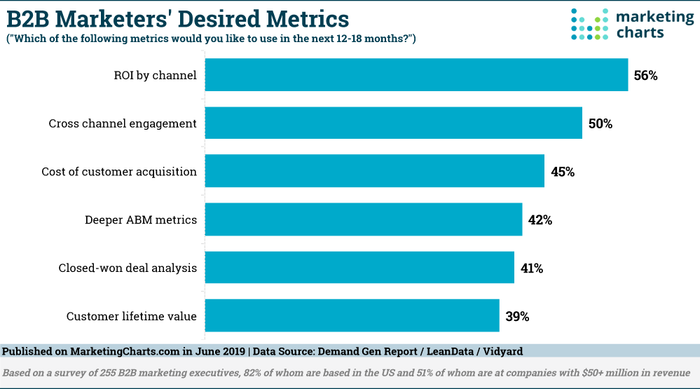
B2C focuses on brand awareness, increasing sales, and customer satisfaction. The main KPIs are sales volume, customer engagement, and relevant social media metrics.
Product complexity and pricing
In B2B, products are often more complex and can't be easily summed up in a few words. An effective digital marketing strategy requires a detailed approach, with enough time and space to explain the features, benefits, and specific use cases to the target audience.
Pricing in B2B can vary significantly, from high-ticket items like business intelligence tools that cost upwards of $100,000 per year to more affordable solutions priced at just a few dollars per month, such as Capsule or Transpond depending on the product’s scope and capabilities.
In contrast, B2C products typically have lower prices and are easier to understand. They usually don't require extensive explanations; a clear, concise message highlighting benefits is enough to resonate with consumers and drive purchases.
Top B2B digital marketing strategies to try in 2025
Where to get started with your B2B digital marketing efforts? Here are some ideas to consider.
Search engine optimization
Search engine optimization (SEO) has been a cornerstone of B2B digital marketing for decades, and for good reason. When done correctly, SEO helps your website rank higher on search engine results pages, driving traffic and leads to your site 24/7.
Combining on-page SEO (optimizing content, meta descriptions, canonical URLs, and internal linking) with off-page SEO (building backlinks and external signals), you can improve your rankings for targeted keywords across the sales funnel. While SEO experts can cost up to $500 per hour or more, there’s plenty you can handle yourself.
We’ve detailed some simple steps below:
B2B SEO formula for success:
- Keyword research: Identify keywords that match every stage of the sales funnel – from broad awareness terms (e.g., "business intelligence tools") to bottom-of-funnel intent-driven searches (e.g., "best BI software for manufacturing"). You can use tools like Ahrefs or Semrush to uncover these. Or, you can get some interesting ideas from free sites like AnswerThePublic.com or AlsoAsked.com.
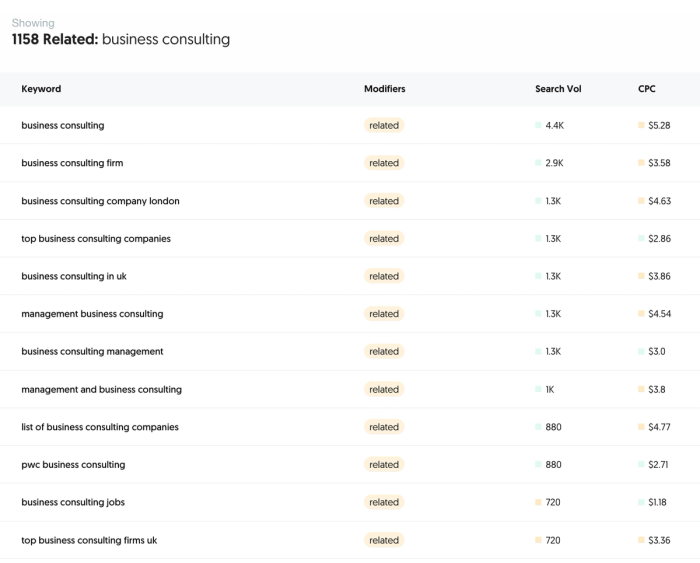
- On-page optimization: Optimize each piece of content’s title, meta description, headers, and body text. Ensure your content is detailed, informative, and directly answers search intent.
- Content creation: Regularly publish long-form, valuable content that solves specific problems for your target audience. Blogs, case studies, and white papers all work well for B2B! We’ll cover all of them later on.
- Build backlinks: Improve your site’s authority by earning backlinks from high-authority industry websites through partnerships or PR efforts.
- Monitor your performance: Use free tools like Google Search Console or Google Analytics to track rankings and tweak your plan based on performance data.
You can adjust your strategy depending on your starting point, budget, resources, or niche competitiveness.
Content marketing
Many believe content marketing doesn’t convert or is just about writing a simple blog post. This misconception leads businesses to overlook the impact of good contentcontent in their strategy.
In reality, content is one of the most powerful tools for guiding prospects through the buying cycle, building trust, and driving conversions. The secret to success here lies in understanding your audience's buying cycle.
To address specific pain points, you can use the Buyer Awareness Matrix.
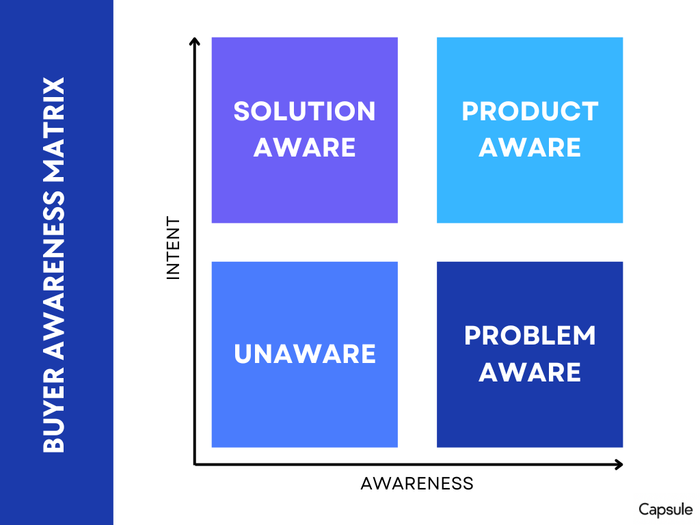
The matrix breaks down audience awareness into four distinct stages, each requiring a different content approach:
- Unaware: At this stage, your audience doesn’t realize they have a problem that needs solving. Your goal here is to raise awareness and educate them on their understanding. Content like symptom-focused articles, quizzes, and press articles work well for educating this group and helping them recognize an issue they haven’t considered.
- Problem aware: These audiences know they have a problem but aren’t aware of solutions – let alone of your product or services. This is where you want to shift from education to providing helpful information. Create content like checklists, guides, and webinars that clearly outline the problem and start positioning your brand as a potential solution.
- Solution aware: At this stage, audiences are actively seeking solutions. They know the problem exists, and now they need help evaluating the best options. Content like buying guides, industry reports, and scorecards that compare different solutions can help potential customers make informed decisions and move closer to selecting your product.
- Product awareness: This audience knows your product and evaluates if it suits their needs. This is the time to build trust and showcase your product’s value through case studies, use case pages, comparison pages, and ROI calculators. These content types provide the hard facts and tangible benefits that help tip the scales in your favor.
A superb example comes from Hootsuite, a social media marketing ROI calculator:

Account-based marketing
Account-based marketing, or ABM, is a digital marketing strategy where you focus on a specific segment of your target audience and spend all your resources to attract them. Instead of broad outreach, ABM targets high-value accounts with tailored messaging and personalized campaigns.
For example:
- Rather than writing to all marketing managers in your target audience, you dial in on senior marketers in SaaS companies with 50+ employees in the US
- Instead of trying to reach all IT directors, you focus specifically on CIOs in healthcare organizations with over 200 employees, targeting those needing digital transformation solutions
- As opposed to marketing to all HR professionals, you target HR managers in financial services firms that are expanding internationally and need scalable payroll solutions.
With ABM, the key lies in personalization. Using tools like email marketing, social media content, and AI-powered insights, you can segment your lead lists and create tailored outreach for each account. Every touchpoint – from emails to ads – is customized to address the specific needs, pain points, and goals of each account to make your message more relevant and effective.
Organic social media marketing
A LinkedIn or X account isn’t enough to stay on your customers' radars. You mustactively post and engage with your audience to make an impact. Interacting with followers, responding to comments, and reacting to mentions help you build a presence and grow your brand’s reach.
Before you invest money in paid campaigns, try to do it for free. While organic reach is somewhat limited these days – since platforms prioritize paid content – a few free activities can help you maintain a strong presence without spending a dime. Below are seven quick tasks that you can do in just one hour a week to get the most out of your social media efforts:
- Post original content (15 minutes): Share an insightful blog post, company update, or a quick tip that provides value to your audience.
- Engage with followers (10 minutes): Reply to comments and thank people for engaging with your posts.
- Respond to direct messages (5 minutes): Address any inquiries or direct messages from potential customers to show you're listening to them.
- Repurpose existing content (10 minutes): Take content from your blog, webinars, or videos and turn it into bite-sized social media posts. Nowadays, you can do that with AI or simple marketing tools.
- Comment on industry-related posts (10 minutes): Participate in relevant conversations by commenting on other posts, offering insight, or asking thoughtful questions.
- Monitor brand mentions (5 minutes): Use a free social media listening tool to track when people mention your brand and jump in when appropriate to engage (or clarify).
- Share user-generated content (5 minutes): Repost or share content that your customers have tagged you in, or that showcases your product in action.
Social selling
Imagine sitting in a room full of potential customers, listening closely to their pain points and challenges. Instead of launching into a sales pitch, you offer valuable advice, share your expertise, and join their conversations. Over time, they begin to trust you, seek your insights, and eventually turn to you when they need a solution.
This is the essence of social selling – building relationships and becoming a trusted voice, all before a sale is even made. This approach aligns with a rising B2B eCommerce trend, where the majority of B2B buyers now turn to social platforms to inform their buying decisions.
Social selling happens on platforms where your audience is already spending time. While there are many places to engage, LinkedIn, X (formerly Twitter), Quora, and Reddit stand out for their unique capabilities in B2B marketing:
- LinkedIn is the best for B2B social selling. It’s not just about networking—it’s about consistently sharing valuable content, interacting with industry professionals, and establishing yourself as a thought leader. LinkedIn's features, like InMails and advanced targeting, help you connect with key decision-makers, while LinkedIn Ads provide another channel to serve relevant content directly to your audience. It’s a place to nurture long-term relationships that can lead to meaningful business opportunities.
- With its real-time nature, X is perfect for joining industry conversations, sharing insights, and staying updated on trends. Regularly posting thought-provoking content, engaging with industry leaders, and sharing company updates can help build connections and keep your brand visible to relevant decision-makers.
- As a question-and-answer platform, Quora allows industry experts to share their knowledge. For B2B, answering questions related to your product or service builds credibility and positions your brand as an expert. Using Quora to interact directly with potential customers helps you establish authority. Even a single answer on Quora can generate millions of views!
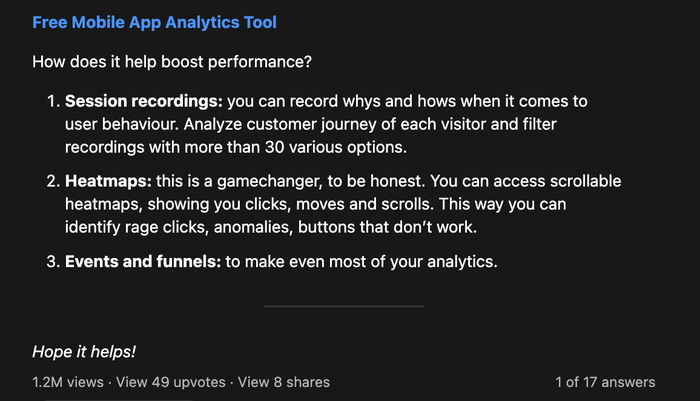
- Known for its diverse and highly engaged communities, Reddit can be valuable for B2B marketing when approached in the right way. It offers a wealth of insights and authentic human interaction, providing unique market perspectives that can't be found elsewhere. Reddit demands a subtle approach – it's all about being part of the community rather than overtly promoting your business.
- Other platforms may also be useful social selling, depending on your niche. For instance, if you run a web development agency, platforms like Pinterest or Instagram could be more effective for showcasing your expertise.
Video marketing
Video is a valuable tool in your digital marketing toolkit for 2024. Naturally, it captures attention more effectively than text or static images. However, video content can also drive impressive business results – increasing organic traffic by 157%, improving conversion rates by 80%, and increasing brand recall by 95%. Its power lies in the engagement it generates and its flexibility to be repurposed across multiple formats and platforms.
Take a long webinar recording, for example. While it might be a full-hour session, you can easily break it down into smaller, more digestible pieces:
- Educational clips that showcase specific points to share in emails or blog posts
- Q&A sections to answer common customer questions in video FAQs.Transcribe the content into a blog post or downloadable whitepaper for those who prefer written formats
- A how-to guide by pulling specific segments and adding visual aids
- A series of social media posts, each featuring a key point or insight from the full video
Video marketing doesn’t have to be an expensive, time-consuming activity. While polished, high-production videos can make a strong impact, there’s plenty of value in shorter, quickly produced videos like product demos, testimonials, or even repurposing content from webinars or interviews. With the right approach, even one video can serve as a content hub that feeds your social media, email marketing, blog posts, and more – maximizing its reach.
And it never hurts to be prepared for viral success, right? Within a very narrow niche, this Snowflake Inc. video attracted nearly half a million views:
Webinars
While webinars are part of video marketing, their versatility and unique features deserve their own category. In recent years, webinars have become one of the most powerful tools for B2B digital marketing, and for good reason.
You can host webinars for hundreds of attendees simultaneously often for just a few dollars per session, while generating significant returns. Whether you're inviting 5 or 500 attendees, scaling your event is simply. An offline event wouldn't allow you to do that. Real-time webinars offer immediate engagement opportunities, allowing your audience to ask questions, participate in polls, and take advantage of time-sensitive offers.
To make the most of webinars, choosing the right format is essential. Here are three popular types of webinars and how they should be structured for maximum impact:
Educational webinars
Designed to teach or inform your audience, these webinars often cover a specific topic or industry trend. They should be packed with valuable insights and practical takeaways. Think of them as an extended how-to guide in a live format. Structure these webinars with clear sections, including:
- An engaging introduction that sets the stage.Step-by-step content delivery
- A Q&A session at the end to clarify points for the audience.
These work particularly well for building authority and trust in your industry.
Webinar: How to build your GPT in ChatGPT
Product demos
A product demonstration webinar walks potential customers through your solution in real-time. This is ideal for showing exactly how your product works, answering questions as you go, and demonstrating its value. To maximize the effectiveness:
- Keep it interactive by allowing viewers to ask questions
- Focus on pain points – and how your product solves them
- Include a clear call to action at the end, such as signing up for a trial or booking a consultation.
Product demo webinars are great for prospects who are further in the sales funnel and ready to see your solution in action.
Webinar: Live platform tour of Capsule
Panel discussions or interviews
These webinars feature industry experts or thought leaders discussing key issues or trends. With a moderated format, the audience gets to participate in a dynamic conversation. Here’s how to structure them:
- Prepare key questions and topics in advance for a smooth flow.
- Allow the panel to answer some live audience questions.
- Make the conversation insightful but approachable – it should address your audience's practical challenges.
Panel webinars position your brand as a leader in the industry while offering your audience expert perspectives.
Webinar: How to own discovery and drive sales with Morgan J Ingram
Webinars can also be tailored to fit each stage of the Buyer Awareness Matrix – from educating problem-unaware audiences to offering detailed product demos for those who are product-aware and ready to make a decision.
Email marketing with automation
According to a study featured in the Financial Post, every dollar spent on email marketing returns over $42.
While this number might be on the high end for some companies, there’s no denying that email marketing can be a powerful revenue-generating channel when done right.
In B2B, it needs a unique approach.
Instead of sending a single email, a drip campaign – a series of emails sent over time – can nurture leads and move them from casual interest to purchasing intent. With tools like Transpond, you can take these campaigns to the next level.
Here’s how a potential B2B email sequence could look over two weeks::
- Day one: Introduce a pain point relevant to your audience, offering a free resource like an industry report to capture their interest
- Day three: Present your product as the solution to address the pain point
- Day five: Invite them to a product demo or provide a link to an on-demand video walkthrough
- Day eight: Share testimonials or social proof to reinforce the value of your solution
- Day ten: Create urgency by offering a limited-time incentive, such as a free trial or discount
- Day 14: Send a final reminder of the expiring offer.
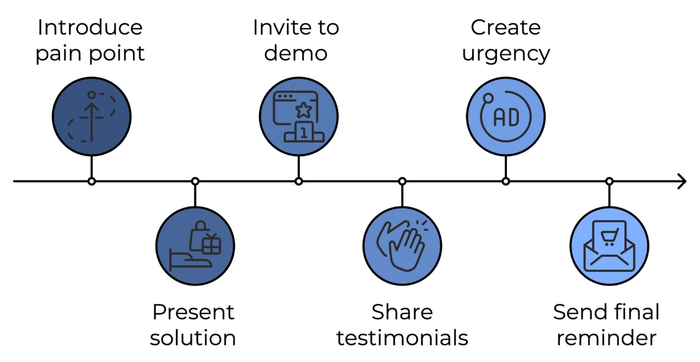
Of course, this sequence only works if you already have an email list you can send these campaigns. If you don’t, you should start building one – even a simple email finder can help you with that.
Before launching your campaign, you’ll need a database of email addresses collected with proper consent. Here are some standard methods for collecting B2B addresses:
- Gated content: offer valuable resources like whitepapers, eBooks, or industry reports in exchange for contact information
- Webinar registrations: attendees who sign up for webinars can opt-in for follow-up emails
- Networking events (in-person or virtual): Collect business cards or connect via LinkedIn and request permission to send further information
- Newsletter signups: Encourage visitors to subscribe to your newsletter for regular updates, industry insights, or exclusive content.
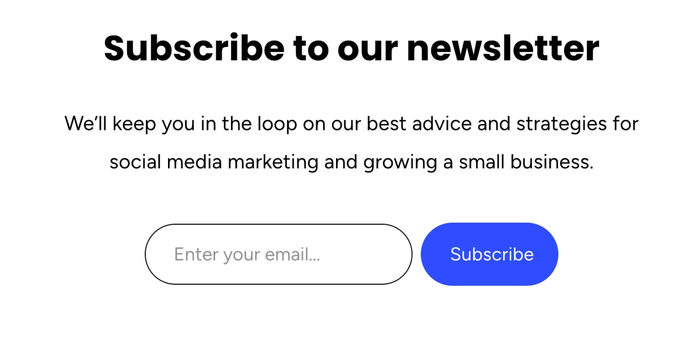
There’s one thing you always need to keep in mind – compliance. Ensure that every method complies with regulations such as GDPR, CCPA, or any applicable local laws by obtaining consent before adding any email address to your list.
Conversational marketing
67% of customers nowadays use live chats and chatbots for quick interactions with a brand. Instead of calling or sending an email, customers can write a quick message to your team and get a real-time reply.
But what if you don't have someone available 24/7 and customers keep reaching out?
Simply use an AI-powered chatbot instead. With some training, you can teach AI chatbots to:
- Reply to your customers' most frequently asked questions
- Book meetings for your team
- Capture valuable lead information
- Offer personalized product suggestions based on a customer’s behavior
- Provide order status updates in real-time
- Guide customers through returns and refunds based on company policies.
- Help customers resolve technical issues with real-time support
- Remind customers about their abandoned carts and encourage them to complete the purchase
- Request feedback or reviews from customers after a transaction.
For B2B businesses, where clients often expect detailed responses and quick solutions, AI chatbots offer more than convenience – they provide round-the-clock engagement without waiting for a sales rep. Instead of leaving customers waiting or lost in long emails, AI chatbots help B2B companies maintain momentum in critical client relationships, even outside business hours.
Influencer marketing for B2B
When people think of influencer marketing, they often picture celebrities pushing fashion or tech products in flashy B2C campaigns. But here’s the truth: B2B can leverage influencers just as effectively – and sometimes even more strategically. In fact, ignoring influencers in B2B is like leaving a powerful tool untouched.
Take Cisco Champions, for example. Cisco knew that its audience needed expertise and trust. So, instead of celebrities, they tapped into IT thought leaders who were already respected voices in their field. Through early access to new products, Cisco let these influencers share real insights and honest feedback, resulting in over 55,000 social media interactions.

However, B2B influencer marketing isn’t confined to traditional platforms. Look at TL;DV, and their partnership with influencers on TikTok. Yes, TikTok – a platform you’d think was reserved for dance challenges and viral trends.
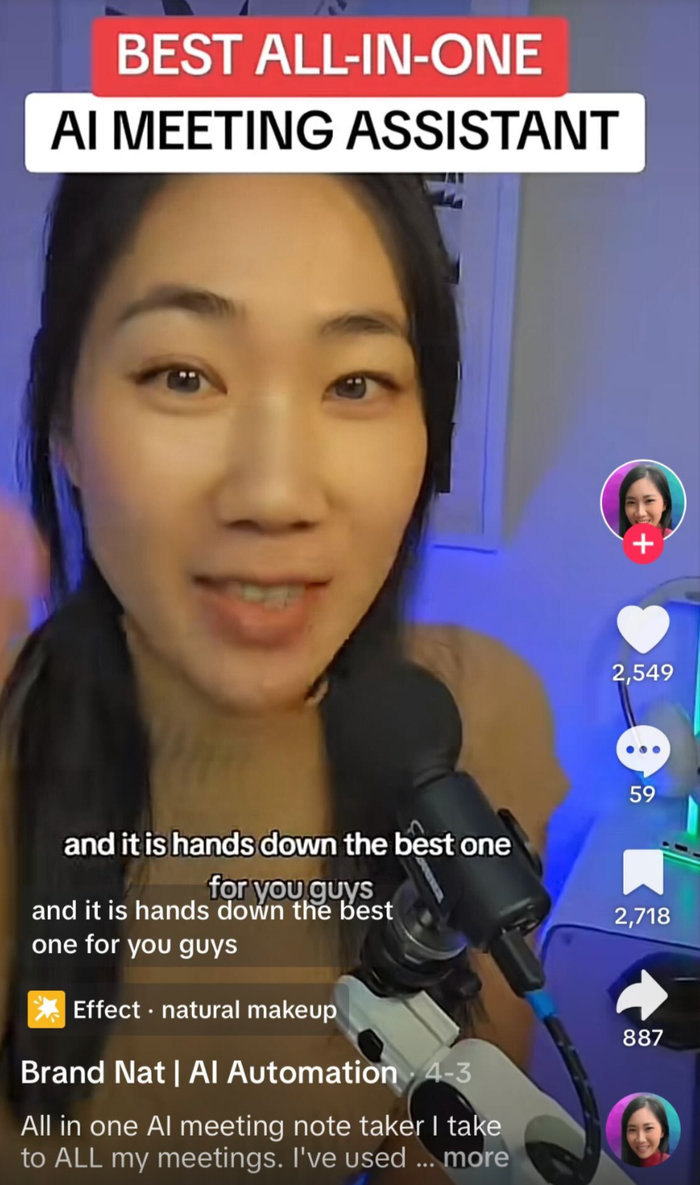
Influencers like Brand Nat promoted TL;DV's AI-powered meeting note taker by sharing their personal experiences through engaging short videos. By speaking "the language of TikTok" and mixing it with real value, TL;DV made an AI tool relatable, reaching a wider audience than you’d expect for a B2B tool. Generating 2,500 likes and over 2,700 saves, this example shows how impactful even a single influencer post can be for B2B marketing.
Affiliate marketing
While influencers drive awareness and engagement, affiliate marketing focuses on directly driving sales.
Affiliate marketing allows you to build a network of resellers or affiliates who promote your product in exchange for a commission on each sale they generate.
It’s a win-win: they earn, and you expand your reach without doing all the heavy lifting yourself.
Affiliate marketing is a huge channel for B2B for three key reasons.
- Scalability without upfront cost: Unlike traditional marketing channels, which require heavy upfront investment, affiliate marketing is performance-based. You only pay when sales are made, making it a scalable solution that doesn’t require a large budget to start..
- Access to niche-targeted audiences: Affiliates often have deep connections within specific industries or markets. With their help, you can connect directly with highly targeted customer segments that align with your products without building those relationships yourself
- Amplified marketing reach: Affiliates use their websites, landing pages, communities, paid ad budgets, social media platforms, and email lists to promote your products. This means your brand benefits from a variety of marketing strategies without any additional internal resources on your part. Your B2B business can reach audiences in ways you may not have the capacity for in-house.
In return, you give them a commission for every sale they bring in. Affiliates become an extension of your marketing team without the payroll.
Since it sounds great, you might wonder where to find affiliates that deliver.
Here are a few places to get started.
- Affiliate networks: Platforms like ShareASale, Impact, and PartnerStack offer directories of B2B-focused affiliates
- Industry influencers: Work with bloggers, podcasters, or thought leaders who have established a following in your field
- Existing customers: Turn loyal customers who already know and trust your product into affiliates. Many call them “brand ambassadors.”
- Niche forums or LinkedIn groups: Connect with professionals in your industry who may want to promote your product.
Building a community
Building a community can be one of the most effective strategies for increasing brand awareness and becoming a trusted name in your niche. It often starts with offering specialized knowledge in your industry for free, attracting a target audience that values your insights.
Once that audience grows, you can monetize it, charging a fee for access to exclusive content or networking opportunities.

Exit Five is a great example. What started as a free community for B2B marketers has grown into one of the largest. Now, joining Exit Five costs $300 a year, providing members access to valuable insights and connections. Building a community is often a low-cost approach – but it requires dedication and consistent effort to deliver value and grow your following.
PPC and performance marketing
Performance marketing and PPC campaigns offer a clear path to measurable results but operate on a pay-to-play model. You’ll see results if you keep investing in the ads, but once you stop funding them, the flow of leads and conversions dries up. In other words, if you close the tap, there’s no money pouring in – and no results.
PPC is appealing to businesses because of the data behind it. Investing in content marketing or SEO can feel unpredictable due to uncertain ROI and hidden variables. In contrast, PPC can give you a breakdown of your return on ad spend (ROAS).
So, if you want some data-driven insights into how much you spend and what you get back, you can do some basic calculations:
- If you invest $1,000 in Google Ads and your cost per click is $5, that’s 200 clicks. Assuming a conversion rate of 5%, you’d gain 10 new customers.
- With each customer bringing in an average sale of $500, those 10 customers equal $5,000 in revenue, giving you a 5x return on your ad spend.
- Retargeting takes it a step further. Let’s say 100 people visit your site without converting. If you spend $300 on retargeting and convert 10% of those visitors, you’re looking at 10 more conversions for a fraction of the cost.
Platforms like Google Ads and LinkedIn Ads let you optimize, split-test, and tweak your campaigns to the last dollar. So, if you want results you can measure, PPC is where the numbers tell you the real story. However, many B2B businesses are hesitant to run ads because of the higher price points of their products and longer sales cycles – making quick returns less certain.
Conclusion
It’s impossible to tackle B2B digital marketing overnight. But with the right tools and approach, you can start seeing results sooner than you think.
Digital marketing success in B2B is about being efficient, data-driven, and responsive to what works. Start small, take advantage of automation, and use tools like Capsule CRM to help you grow in the right direction.
Frequently Asked Questions
B2B digital marketing promotes products or services from one business to another using online channels like search engines, social media, email, and content marketing. Its goal is to build relationships, generate leads, and convert them into customers, targeting business decision-makers rather than individual consumers.
B2B digital marketing focuses on logic, relationship-building, and offering solutions to business challenges. It often involves longer sales cycles and complex decision-making processes. In contrast, B2C marketing targets consumers directly with emotionally driven messaging, usually aiming for quicker transactions.
Top strategies include:
- Account-based marketing (ABM) for personalized outreach to critical accounts.
- SEO and content marketing to attract high-intent leads.
- LinkedIn marketing for professional engagement.
- Email automation to nurture leads.
SEO helps improve a company's visibility on search engines, making it easier for potential business buyers to find relevant products and services. B2B SEO strategies often target niche industry keywords and focus on providing high-value, educational content. This improves organic search rankings and drives qualified traffic to the site.
LinkedIn is a critical platform for B2B marketing, enabling businesses to connect directly with decision-makers. It offers precise ad targeting based on job roles, industries, and company sizes. Tools like LinkedIn Sales Navigator also enhance account-based marketing efforts by streamlining outreach to high-value accounts.



